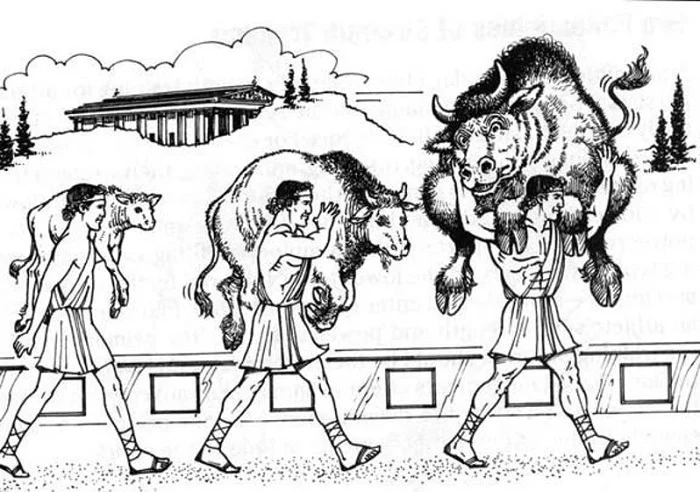Progressive overload forms the foundation of all workout programmes. Without it, your physique would plateau and you wouldn’t improve.
“Progressive overload is the process by which we vary the difficulty of an exercise to ensure our body continues to adapt to the stresses of that exercise.”
The story of Milo of Croton is often used to explain progressive overload. The story goes that Milo carried a calf up the same hill every day. Milo started as the calf was a baby and continued until it was a fully-grown bull.
The body adapted to the increased weight every day. The weight of the bull changed alongside Milo’s increase in strength. As the bull got heavier, Milo got stronger. This is the idea of progressive overload.
This is of course a myth. The body can’t adapt indefinitely. Milo would have reached a point by which he couldn’t lift the bull anymore.
The principle remains. Once we are comfortable with a certain stimulus, we must progress to adapt.
Let’s say you can squat 100kg for 3 sets of 5 reps, and have been doing this for 4 weeks. If you continue to do the same your body will become accustomed to the movement. If you continuously apply the same stimulus you’ll get the same results.
Progressive overload doesn’t only refer to the amount of weight lifted. There are many ways you can vary the stimulus:
- Lift the same weight, but increase the range of motion (eg deeper squat)
- Lift the same load and volume, with more control and better form
- Increase the reps or sets (volume)
- Increase the weight (load)
- Decrease rest between sets (density)
- Increase speed and acceleration (effort)
- Lifting the same load and volume more often (frequency)
- Decrease body weight, but lift the same reps and load (relative volume)
- Extend the final set past failure using advanced training principles (eg negative reps)

Progressive overload has four rules you must follow.
Rule 1: Never increase the intensity or load of an exercise at the cost of proper technique. If you can’t perform proper technique you’re at risk of injury and you won’t isolate the muscle.
Rule 2: Progressive overload is not linear. It’s not as simple as adding weight forever until you’re the world’s strongest man. You will hit a ceiling. This is why proper programming is so important.
Rule 3: Only vary one element at a time. For example, increase the number of reps but keep all other aspects the same. Don’t increase reps and the weight in one go.
Rule 4: It varies based on lifting experience. If you’re new to bodybuilding you’ll be lifting heavier weights almost every session. The more experienced you get, the smarter you have to be about your programming.
Progressive overload requires proper programming. If you’re not following a programme, you’re leaving gains on the table.
Read more about Milo of Croton here.


